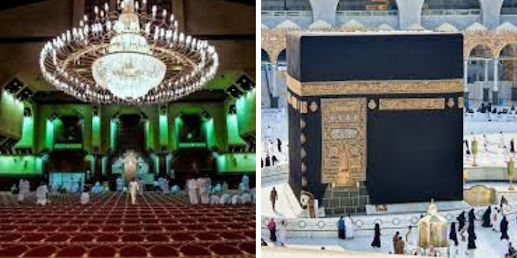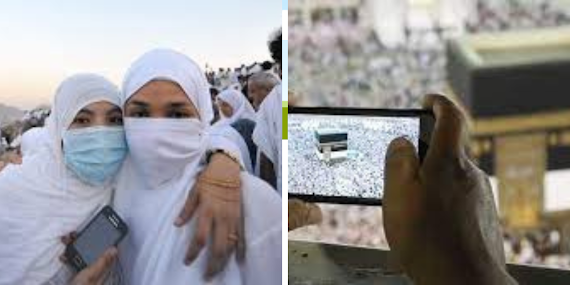Masjid e aisha in mecca and how the muslims performed their rituals in mosque.
Masjid e Ayesha, also known as the Mosque of Aisha, is a significant mosque located in Mecca, Saudi Arabia.
It is named after the wife of Prophet Muhammad, Aisha, who joined Ihram in this mosque in ordering to perform her Umrah travels while menstruating. The Holy Prophet said,
“Part of the worship of Hajj and Umrah is to travel in the way of Allah and to go out of the city.”
It holds historical and religious importance for Muslims, particularly those performing Hajj and Umrah. Here are some of the activities and rituals that Muslims can perform in Masjid e Ayesha
Prayer:
Muslims can perform the five daily obligatory prayers (Salah) in Masjid e Ayesha. The mosque provides a spiritually uplifting environment for worship. Muslims gather in the congregation, led by an Imam, to engage in communal prayer.Prayer: Muslims can perform the five daily obligatory prayers (Salah) in Masjid e Ayesha.
Here are the points regarding performing the five daily obligatory prayers (Salah) in Masjid e Ayesha:
- Timing
Muslims can perform the five daily prayers at Masjid e Ayesha. The timings for each prayer (Fajr, Dhuhr, Asr, Maghrib, and Isha) are announced through adhan .
2.Congregational Prayer:
Masjid e Ayesha provides a space for Muslims to gather and perform the prayers in the congregation (Jama'ah). Women can also participate in congregational prayer, although they may have separate designated areas.
3.Imam:
Imam leads the congregational prayer in Masjid e Ayesha. Following the Imam's movements, Muslims perform various prayer .
Nafl (Voluntary) Prayers:
Besides obligatory prayers, Muslims can engage (Nafl) in Masjid e Ayesha. These additional prayers are performed to earn extra rewards and draw closer to Allah. The mosque offers great space for individuals to engage in personal worship and supplication.
- Nafl:
- prayers are optional prayers these voluntary prayers are not mandatory but are highly recommended and carry great dividends.
- Types of Nafl Prayers:
There are various types of Nafl prayers that Muslims can perform.
types of nafl:
Sunnah Muakkadah:
- These are the emphatic or highly recommended Sunnah prayers that Prophet Muhammad (peace be upon him) regularly performed .
- Ghair Muakkadah: These are the non-emphatic or less emphasized Sunnah prayers that Prophet Muhammad (peace be upon him) occasionally performed
- Tahajjud: This is a voluntary prayer completed after the Isha prayer and before the Fajr prayer. It is usually referred to as the "Night Prayer" and holds great spiritual meaning.
Recitation of the Qur'an:
Muslims can engage in the recitation of the Qur'an in Masjid e Ayesha. The mosque provides a peaceful setting for Muslims to study, reflect upon, and recite the verses of the Qur'an. Many individuals choose to recite and remember portions of the Qur'an during their time in the mosque.
- Seeking Knowledge:
Masjid e Ayesha is an ideal place for pursuing Islamic knowledge. Muslims can attend religious lectures, classes, and seminars conducted within the mosque premises. Scholars and knowledgeable individuals often deliver talks on various aspects of Islam, including the teachings of Prophet Muhammad (peace be upon him) and the life of Aisha (may Allah be pleased with her).
Reflection and Contemplation:
The mosque's calm environment provides a helping atmosphere for reflection, meditation, and seeking spiritual solace. Muslims can spend time in solitude, pondering upon their faith, seeking forgiveness, and offering supplications to Allah.
Invocation and Du'a:
Muslims can engage in heartfelt supplications and invocations (Du'a) in Masjid e Ayesha. It is believed that the acceptance of prayers is more likely in blessed places, and Masjid e Ayesha holds a special status for visitors. Muslims can beseech Allah for guidance, forgiveness, and blessings in this sacred space.
Visiting the Grave of Aisha (may Allah be pleased with her):
Adjacent to Masjid e Ayesha is the burial place of Aisha (may Allah be pleased with her), the wife of Prophet Muhammad (peace be upon him). Pilgrims can visit her grave and offer prayers for her. It is a moment of reverence and remembrance of the holy individuals who contributed to the development and preservation of Islam.
Community Engagement:
Masjid e Ayesha serves as a meeting point for Muslims from diverse backgrounds. It provides an opportunity for Muslims to join with fellow devotees, exchange greetings, share experiences, and promote a sense of community and brotherhood.
It's important to note that while the aforementioned activities are commonly performed in Masjid e Ayesha, the specific rituals and practices may vary based on personal appreciation and the time of visit.
Muslims are encouraged to engage in acts of worship and devotion while respecting the sanctity of the mosque and sticking to its regulations and guidelines.



Comments
Post a Comment